A Land Carved by Wind and Water
There are places you visit, and then there are places you feel. The Faroe Islands are firmly in the latter category. Tucked away in the churning North Atlantic, halfway between Norway and Iceland, this remote archipelago of 18 volcanic islands is a world unto itself. It’s a place where waterfalls plunge from staggering green cliffs directly into the ocean, where sheep outnumber people two to one, and where the weather is a dramatic, ever-present character in the story of your day. To talk about the Faroe Islands beauty is to talk about something raw, untamed, and deeply humbling. Forget everything you think you know about a European vacation. This is something else entirely. It’s an adventure for the soul.
I remember my first morning. Waking up in a small guesthouse in a village with maybe ten houses, the only sound was the bleating of a distant sheep and the insistent whisper of the wind. I pulled back the curtains to a view that felt prehistoric—a fjord the color of slate, flanked by mountains so impossibly green they seemed to glow from within. A low-hanging mist was slowly burning off, revealing the sheer, dramatic scale of it all. This wasn’t a landscape you just looked at; it was a landscape that looked back at you. It challenges you, inspires you, and ultimately, changes you. It’s a place that gets under your skin and stays there long after you’ve flown home.
Key Takeaways for Your Faroese Adventure
- Embrace the Weather: It changes constantly. Pack waterproof layers and be prepared for sun, rain, fog, and wind, sometimes all within the same hour.
- Rent a Car: Public transport is limited. A car is essential for freedom and exploring the islands’ many nooks and crannies, connected by an incredible network of sub-sea tunnels.
- Respect Nature: The landscape is fragile. Stick to marked paths, respect private land (much of it is farmland), and follow the local hiking guidelines to preserve this pristine environment.
- It’s About the Journey: Don’t just rush from one Instagram spot to the next. The most magical moments often happen on a winding road, in a tiny village, or during an unplanned stop to watch the clouds roll in.
What Makes the Faroe Islands So Unforgettable?
It’s a question I get a lot. What is it about this small cluster of islands that leaves such a profound impact? It’s not just the dramatic visuals, though they are certainly a huge part of it. It’s the feeling of isolation in the best possible way. You feel a genuine disconnect from the noise of the modern world. Your phone signal might be fine, but your mental signal tunes into a different frequency—one dictated by tides, weather fronts, and the rhythm of a slower, more deliberate way of life.
The scale of nature here is monumental. You’ll stand at the base of a cliff and feel utterly minuscule. You’ll drive along a coastal road with the wild Atlantic crashing just feet away and feel the raw power of the planet. And then, nestled in a protected cove, you’ll find a tiny village of turf-roofed houses that looks like it was plucked from a fairy tale. It’s this constant juxtaposition—the immense power of nature and the quiet resilience of human life—that is so captivating. There are no trees to speak of, which leaves the landscapes wide open, exposed, and achingly beautiful. It’s a place that demands your full attention.

Planning Your Trip: When to Go and What to Pack
Deciding when to visit the Faroes largely depends on what you want to experience. There’s no wrong time, just different experiences.
Summer (June – August)
This is the most popular season for good reason. The days are incredibly long (the sun barely sets in June), the landscapes are at their most vibrant green, and the puffins have arrived! This is the prime time for hiking, with more stable weather and most trails being accessible. The downside? It’s the busiest and most expensive time. You’ll need to book accommodation and rental cars well in advance. But if you want to see puffins on Mykines or experience the midnight sun, summer is your season.
Shoulder Seasons (May & September)
My personal favorite. The crowds have thinned, but the weather can still be quite pleasant. You’ll experience a more dramatic interplay of light and shadow, and there’s a beautiful, moody quality to the islands. You might miss the peak puffin season, but the trade-off is a greater sense of solitude on the trails.
Winter (October – April)
For the truly adventurous. Winter in the Faroes is a symphony of dramatic storms, moody skies, and a powerful, introspective atmosphere. Days are short, and many hiking trails can be treacherous or inaccessible. However, you’ll have the place almost to yourself, and you might even be rewarded with a glimpse of the Northern Lights on a clear night. It’s a very different, but equally powerful, experience.
The Non-Negotiable Packing List
The Faroese have a saying: “If you don’t like the weather, wait five minutes.” It’s absolutely true. Layering is not just a suggestion; it’s a survival strategy. Here’s what you absolutely must bring:
- Waterproof Everything: A high-quality waterproof and windproof jacket is your single most important item. Waterproof pants are a close second. Don’t skimp here.
- Sturdy Hiking Boots: Make sure they are waterproof and well-worn. The terrain is often wet, muddy, and uneven.
- Layers, Layers, Layers: Bring base layers (merino wool is fantastic), mid-layers (like a fleece or puffy jacket), and your outer shell. This allows you to adapt as the temperature and conditions change throughout the day.
- A Warm Hat and Gloves: Even in summer, the wind can be bitingly cold, especially at higher elevations or on the coast.
Must-See Locations: Chasing Waterfalls and Legends
While the entire archipelago is stunning, certain spots have become iconic for their sheer, breathtaking beauty. A car is your key to unlocking these treasures.
Vágar Island: Your Epic Welcome
As the location of the only airport, Vágar is everyone’s first and last impression, and what an impression it is. It’s home to some of the most famous sights. First is the village of Gásadalur and its jaw-dropping waterfall, Múlafossur, which tumbles off a cliff straight into the ocean. Until 2004, the village was only accessible via a strenuous hike over a mountain; now a tunnel provides easy access, but the feeling of remoteness remains. Then there’s Sørvágsvatn, the “lake over the ocean.” A relatively easy hike takes you to the Trælanípan cliff, where an optical illusion makes it look as though the lake is floating hundreds of feet above the sea. It’s a view that will stay with you forever.
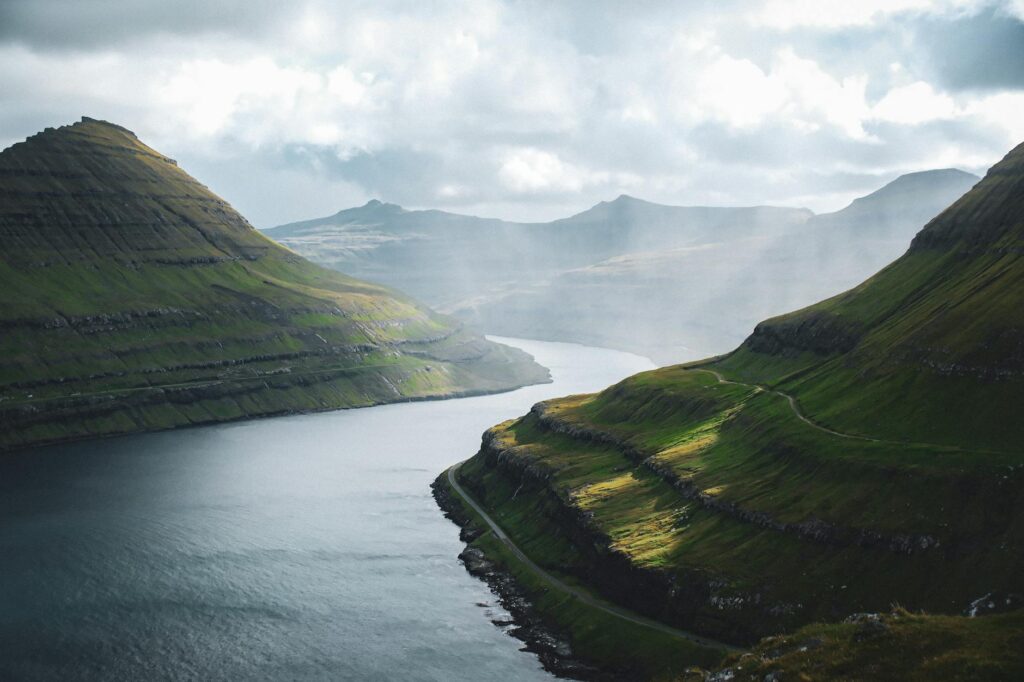
Streymoy Island: The Heartbeat of the Faroes
Streymoy is the largest island and home to the capital, Tórshavn. Don’t picture a bustling metropolis; Tórshavn is arguably the coziest capital city in the world. Wander through the old town, Tinganes, with its turf-roofed, red-painted government buildings, and pop into one of the many wonderful cafes and restaurants. North of the capital, you’ll find the enchanting village of Saksun. It’s a tiny cluster of traditional houses surrounding a tidal lagoon. At low tide, you can walk out onto the black sand beach towards the open ocean. It feels like stepping back in time. On the way, don’t miss Fossá, a magnificent two-tiered waterfall that is especially powerful after heavy rain.
Mykines: The Puffin Paradise
If you visit between May and August, a trip to the island of Mykines is non-negotiable. This is the primary nesting ground for thousands upon thousands of Atlantic puffins. After a ferry ride, you’ll follow a marked path that takes you right alongside their clifftop burrows. They are completely unafraid of people, and you can get remarkably close to these comical, beautiful birds. It’s an overwhelming, joyful, and truly world-class wildlife experience. Remember to book your ferry and hiking pass far in advance, as numbers are limited to protect the birds.
The Hiking Experience: Trails That Will Change You
To truly understand the Faroes, you must walk them. Hiking isn’t just a pastime here; it’s a way of connecting with the land, following ancient sheep paths that have been used for centuries.
Embracing the Raw Faroe Islands Beauty on Foot
The trails here offer something for everyone, from gentle coastal walks to challenging mountain ascents. One of the most famous is the hike to the Kallur Lighthouse on the island of Kalsoy. It requires a ferry ride and a steep, but relatively short, climb. The reward is one of the most spectacular views in the entire North Atlantic, with the lighthouse perched precariously on a narrow promontory, flanked by colossal cliffs. It’s a place that makes you feel alive. For a different experience, try the old postal route from Bøur to Gásadalur on Vágar, which offers incredible views of the Tindhólmur sea stack and Mykines in the distance.
A Crucial Note on Hiking: The Faroese weather is no joke. Always check the forecast before you set out, tell someone your route, and never underestimate the conditions. Fog can roll in with shocking speed, reducing visibility to near zero. A GPS or a reliable map and compass are essential tools.
Beyond the Landscapes: Faroese Culture and Cuisine
The serene beauty of the Faroe Islands isn’t just in the landscapes; it’s in the culture that has been shaped by them. It’s a society built on community, resourcefulness, and a deep respect for the unforgiving sea.
Faroese Culture & People
The Faroese are proud of their unique heritage. They have their own language (a derivative of Old Norse), a thriving music scene, and a strong sense of identity. While they can be reserved at first, they are incredibly warm and welcoming people. Take the time to visit a local cafe, listen to some Faroese music, or attend a local event if you can. It adds a rich layer to your understanding of the islands.
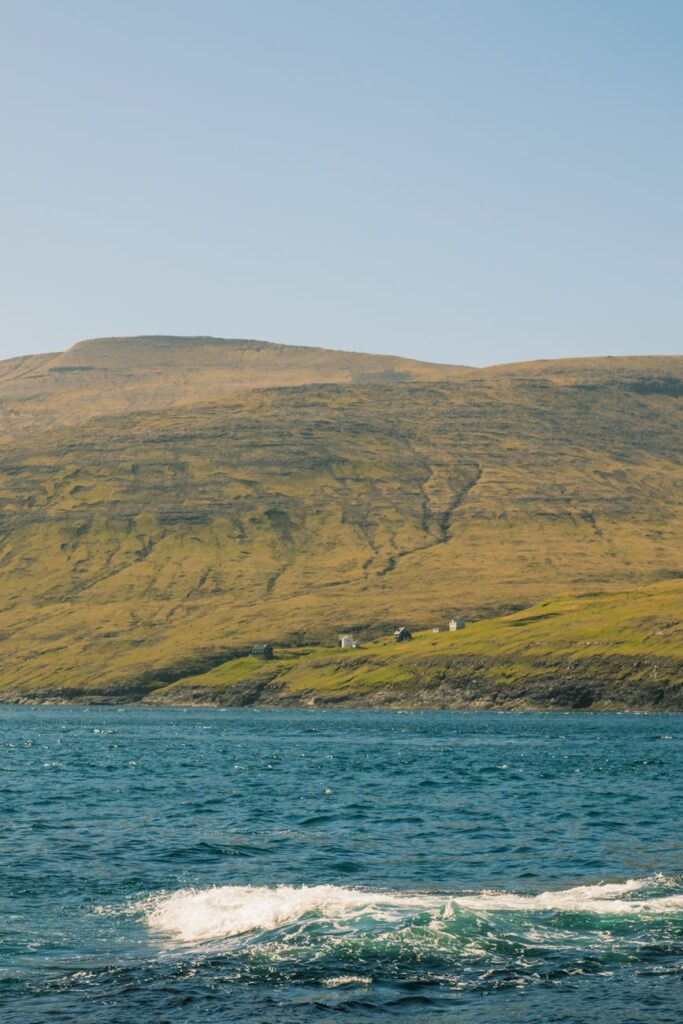
A Taste of the North Atlantic
Faroese cuisine is a direct reflection of the environment. With little arable land, the diet has traditionally been based on what the ocean provides and what can be raised on the hillsides. Seafood is, unsurprisingly, phenomenal. Try the local langoustines or salmon—they are some of the best in the world. The more adventurous will want to sample ræst, the traditional method of wind-drying and fermenting mutton or fish, which has a very strong, pungent flavor. For a truly special experience, book a table at a restaurant like KOKS (if you can get a reservation) or try a more traditional ‘heimablídni’ (supper club) in a local’s home for an authentic taste of Faroese hospitality and food.
Conclusion: A Place That Stays With You
The Faroe Islands are not an easy destination. The weather will test you. The hikes will challenge you. But that is precisely the point. It’s a place that rewards effort with moments of pure, unadulterated awe. It’s the feeling of standing on a cliff with the wind in your hair, watching puffins dive into the sea. It’s the warmth of a small cafe after a rain-soaked walk. It’s the silence of a fjord at dawn. This isn’t just a trip; it’s an immersion into a world where nature is still in charge. The serene beauty of the Faroe Islands is a powerful, humbling, and utterly unforgettable experience that will echo in your memory for years to come.
FAQ
Is the Faroe Islands expensive to visit?
Yes, it can be. It’s comparable to other Nordic countries. Accommodation, car rentals, and eating out are the main expenses. Booking flights and accommodation well in advance, and preparing some of your own meals by shopping at local grocery stores, can help manage the cost.
How many days do I need to see the Faroe Islands?
While you can see some highlights in 3-4 days, I’d recommend at least a week (7-10 days) to truly do it justice. This allows you to explore multiple islands without rushing, accommodate for potential weather delays (like a cancelled ferry), and really soak in the atmosphere of this unique place.
Can you see the Northern Lights in the Faroe Islands?
Yes, it is possible to see the Aurora Borealis from the Faroe Islands, but it’s not as common or reliable as in places further north like Iceland or Norway. Your best chance is during the winter months, from September to March, on a clear, dark night away from city lights. However, the islands are known for their cloudy weather, so consider it a lucky bonus rather than a primary reason to visit.

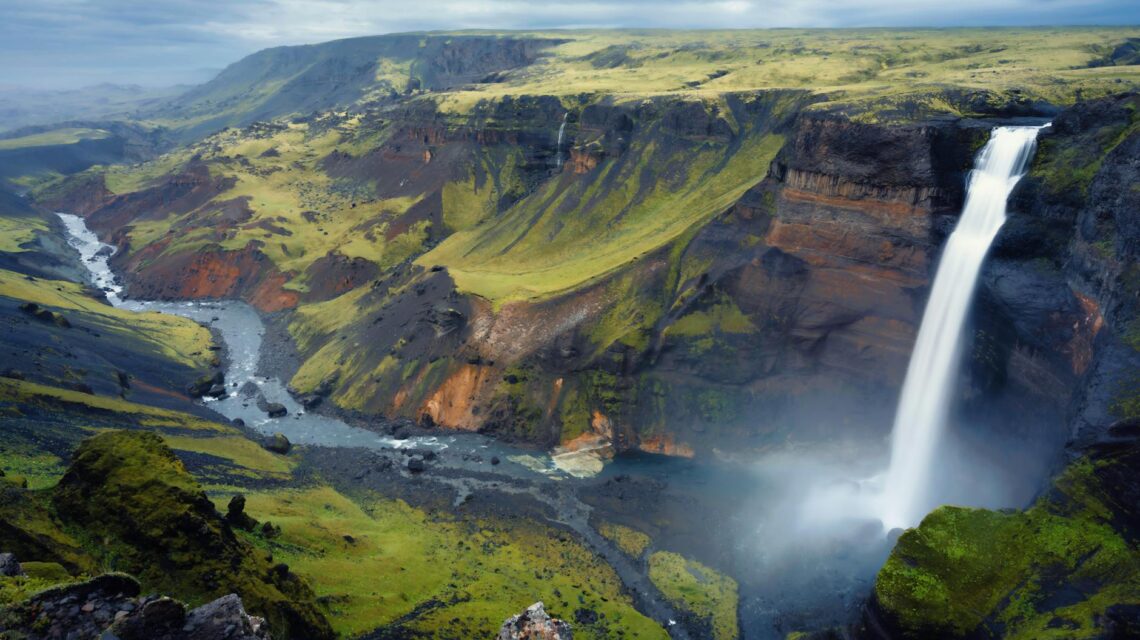

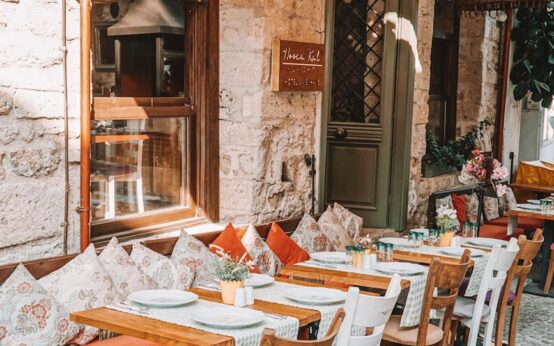 Discover the Joy of an Early Morning Walk in the City
Discover the Joy of an Early Morning Walk in the City 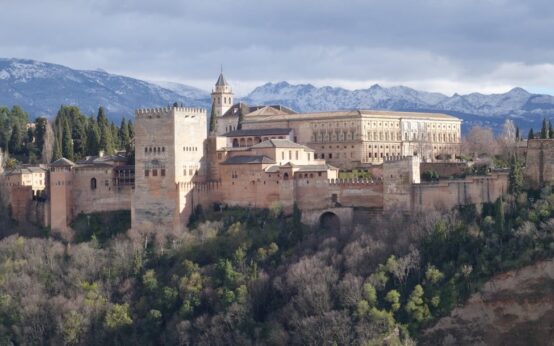 Islamic Gardens: A Paradise of Calming Symmetry
Islamic Gardens: A Paradise of Calming Symmetry  Best Plein Air Painting Destinations | Artist’s Guide
Best Plein Air Painting Destinations | Artist’s Guide  World’s Most Beautiful Greenhouses: A Visitor’s Guide
World’s Most Beautiful Greenhouses: A Visitor’s Guide 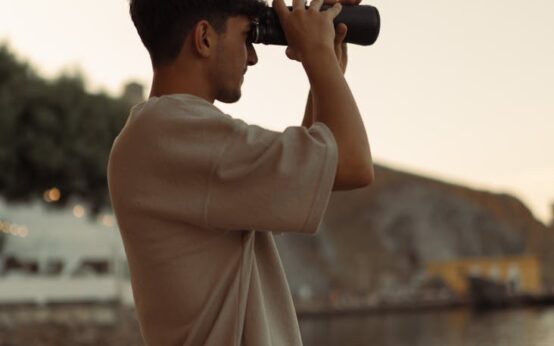 Birdwatching for Travelers: A Calming Hobby on the Go
Birdwatching for Travelers: A Calming Hobby on the Go  How to Find a Secluded Hot Spring (Away From Crowds)
How to Find a Secluded Hot Spring (Away From Crowds)  AI and Blockchain: A Powerful Tech Synergy
AI and Blockchain: A Powerful Tech Synergy  Get a Job in Blockchain: Your 2024 Web3 Career Guide
Get a Job in Blockchain: Your 2024 Web3 Career Guide  Wallet Types Explained: Hot vs Cold & More (2024 Guide)
Wallet Types Explained: Hot vs Cold & More (2024 Guide)  How Venture Capital is Shaping the Crypto Industry
How Venture Capital is Shaping the Crypto Industry  Sentiment Analysis for Crypto: A Trader’s Ultimate Guide
Sentiment Analysis for Crypto: A Trader’s Ultimate Guide  NFTs: The New Key to Membership & Brand Loyalty | Guide
NFTs: The New Key to Membership & Brand Loyalty | Guide